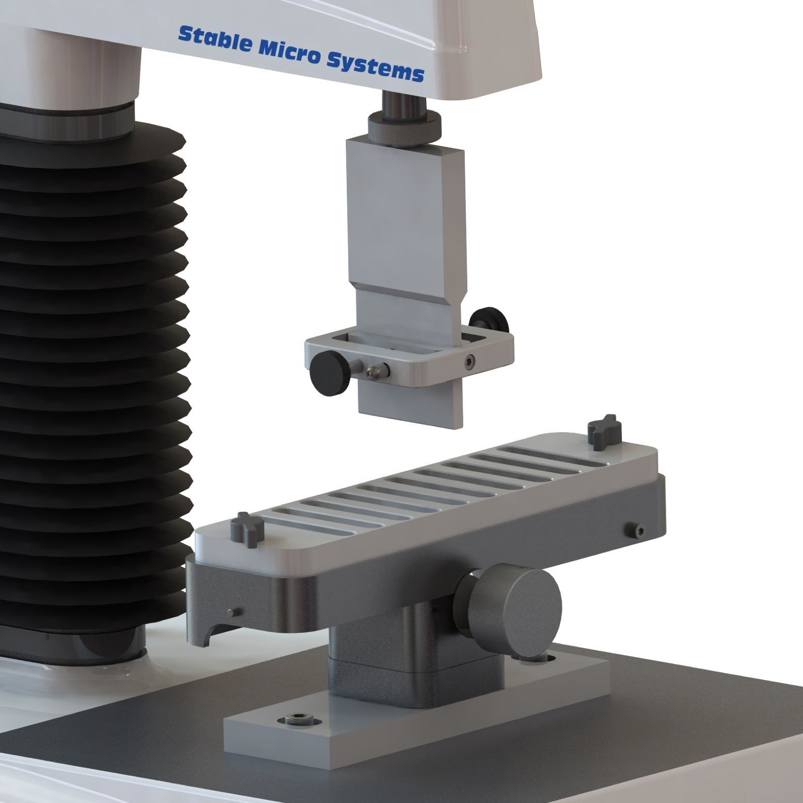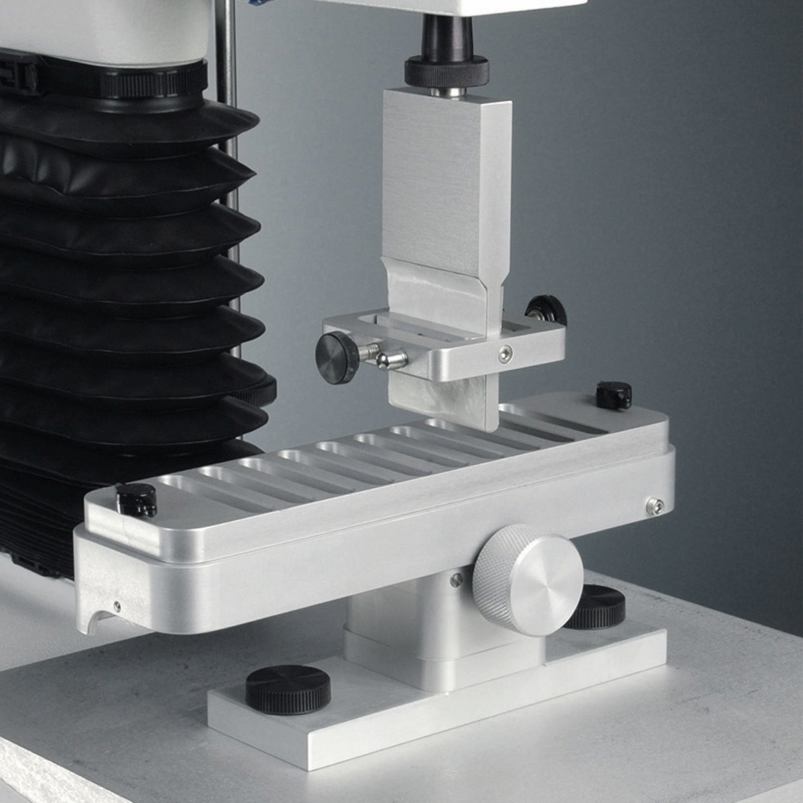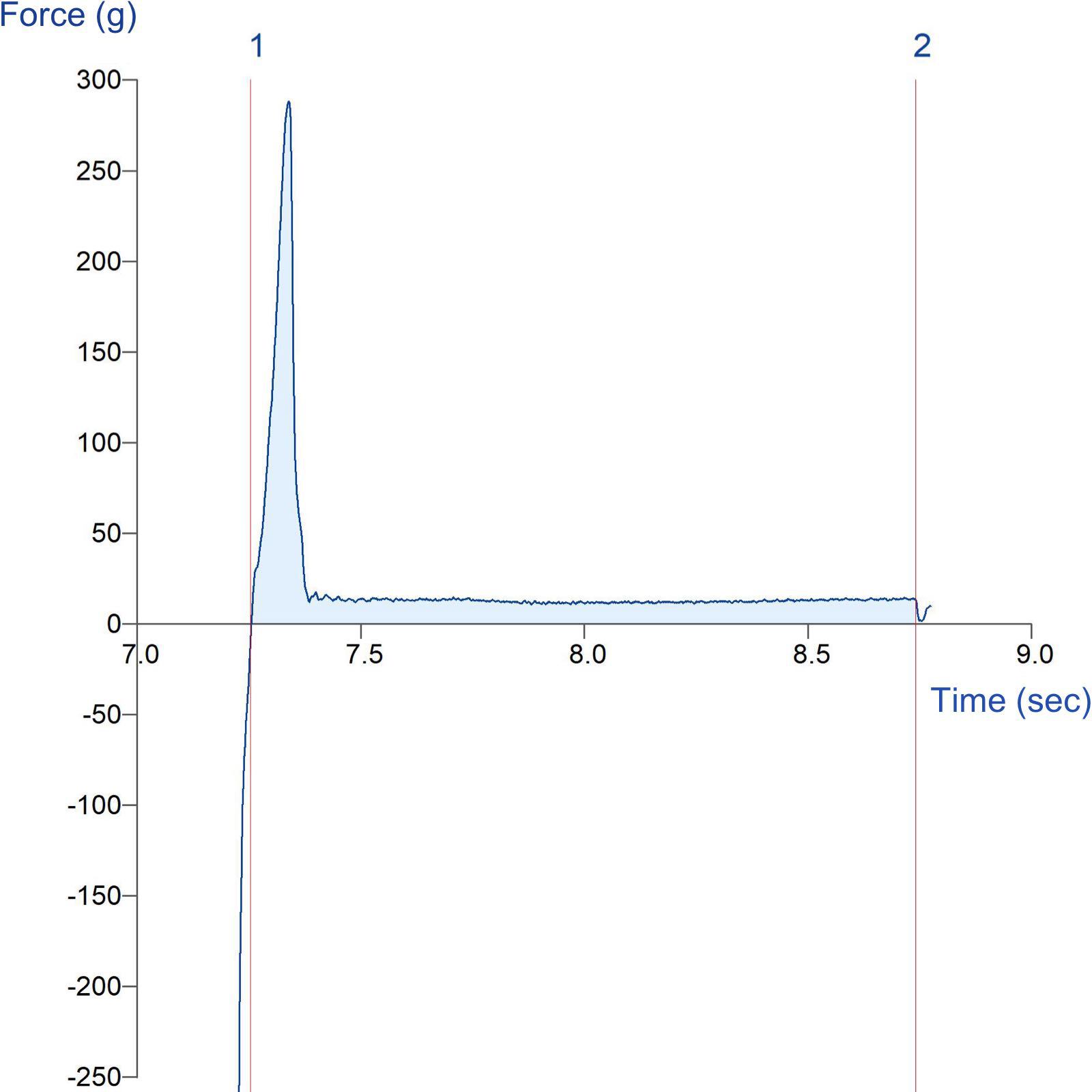Product overview
Measuring the stickiness of packaging material to its contents is essential for maintaining product quality and enhancing consumer satisfaction. Packaging that is difficult to open or handle due to stickiness can negatively impact a brand's image. Consumers may associate such packaging with poor quality and inconvenience. Properly measured and controlled stickiness contributes to smoother operations, reduced waste, and a positive overall brand and product experience.
This attachment incorporates a multi-slot plate and a clamping attachment which work in conjunction with an Adhesive Indexing System. The sample is placed on the underside of the multi-slot plate, while the flexible substrate material is attached to the upper attachment. During the test, the arm of the Texture Analyser brings the attached material down into each slot so that it repeatedly contacts and withdraws from the sample. The maximum force required to withdraw from the sample is recorded, providing a measure of the adhesiveness of, for example, wrapping material to confectionery or tape from a release liner.
How does the Flexible Substrate Clamp work?
Ideal sample form
The material that is to be held in the upper attachment needs to be flexible to be presented to the adhesive material successfully. The adhesive sample is held in the lower attachment and is held down by a slotted plate through which the upper attachment enters in order to come into contact with the sample to measure the force of withdrawal. The sample needs to be a solid material usually presented in a 'sheet' format but may be as thin as tape.
Benefits and limitations
- Multiple measurements can be made from the preparation of one sample.
Technical information
Installation
Full installation instructions are provided within the Education Zone of the latest Exponent/Connect software version and on the technical information sheet accompanying this product.
Chemical compatibility
Stable Micro Systems probes and attachments are commonly made from four materials: anodised aluminium (AA6082 T6), stainless steel (316 T), Delrin (acetyl copolymer) and Perspex (polycarbonate).
In general use, probes and attachments made from these materials will be suitable for testing food products and inert non-food materials.
The four materials listed above are not universally resistant to all types of chemicals and as such the compatibility of the probe/attachment material with the product (to be tested) must be established to prevent damage to the probes and attachments. If the compatibility of the product with the probe is unknown to the customer then the chemical information about the product (Material Safety Data Sheet or Product Data Sheet) should be submitted to Stable Micro Systems. Stable Micro Systems will then assess the suitability of the probe/attachment material for use with the product and advise accordingly. If this advice is not sought then Stable Micro Systems will not accept liability for probes/attachments damaged by chemical attack from the product being tested.
Cleaning and maintenance
All probes and attachments may be cleaned in warm (or hand hot) water using a mild detergent. A soft brush may be used but abrasive cleaning aids should be avoided. Stable Micro Systems products should not be microwaved or cleaned in a dishwasher.
Screw threads should be lightly lubricated after drying using a light lubricant, e.g. petroleum jelly, mineral oil. This will aid the fitting and unscrewing of the item. Each component of a probe or attachment should be wrapped separately when stored, to avoid scratching or chipping. This will safeguard against any unnecessary damage to the accessory.



